-
Posts
2,105 -
Joined
-
Last visited
-
Days Won
11
Content Type
Profiles
Forums
Blogs
Gallery
Events
Store
Posts posted by QSAMIKE
-
-
January 25th. 1900:
Telegram from F.Borden
Colonel S. B. Steele of the North West Mounted Police recommended by Sir Frederick Borden and General Button as best man to command the force.
Appointment approved by Lord Strathcona.
0 -
Mervyn......
Take a look at this.....
Reserves
From 1863 officers were commissioned in the Royal Naval Reserve this was for serving merchant navy officers only. They had rings each formed from two 1⁄4in wavy lines intersecting each other. The curl was formed into a 6-pointed star. The lieutenant commander's half-ring was straight, but only 1⁄8in wide. The commodore had a broad straight ring, but the same star for a curl. Midshipmen had a blue collar patch.
Officers of the Royal Naval Volunteer Reserve (formed 1903) for civilians, had single wavy rings 1⁄4in wide, with the curl a squarish shape. The lieutenant commander's narrow ring was originally straight, but after 1942 was waved also.
In 1951 both reserves lost their distinctive insignia and got normal straight stripes like the regulars, but with a letter 'R' inside the curl. The 2 organisations were merged in 1958. In 2007 Officers of the Royal Naval Reserve removed the 'R' distinction from badges of rank.
This site will give you all the colours.....
http://en.wikipedia.org/wiki/Royal_Navy_officer_rank_insignia#Reserves
Mike
0 -
Good Morning Mervyn........
With out the Loop or crest above the stripes they look like they are Merchant Navy...... Could this be possibe?
In the Canadian Navy Maroon is for Engineers......
Medical is Scarlet......
Mike
0 -
I know this is not a regiment but I still think that is interesting:
THE ORDER OR ST. MICHAEL AND ST. GEORGE.....
Commander - C.M.G. - CALL ME GOD
Knight Commander - K.C.M.G. - KINDLY CALL ME GOD
Knight Grand Cross - G.C.M.G. - GOD CALLS ME GOD
Mike
P.S. I also have heard the Military Police called Meat Heads because of the red of their caps......
0 -
To catch up here is the period January 10th through January 22nd 1900......
January 10th, 1900
53, Cadogan Square, S.W.
Januray 10th, 1900
Dear Mr. Chamberlain,
I beg to refer to our conversation of yesterday and to state that if the proposal should meet with the approval of H. M. Government I should like to provide and sent to South Africa at my own expense two squadrons of mounted men and officers, say, 400 men and horses.
My idea is that both men and horses should be largely drawn from the Canadian North West, the men to be unmarried, expert marksmen, at home in the saddle, and efficient as experienced rough riders or rangers.
I propose to pay the cost of equipment, similar to that of the Canadian Contingent, and the transportation of both men and horses to South Africa, where they would be taken over by the Imperial contingents. I presume on the same terms as the other colonial contingents. After the close of the campaign the men to have the option of returning to Canada the same way as those serving with the contingents sent by the Government of Canada, the horses and arms to be taken over by H. M. Government.
The suggestion has I may say, commended itself to the Dominion Government, and they are prepared to allow the use of their organization for recruiting and equipping purposes.
I shall be glad to hear from you at your earliest convenience if it is the opinion of yourself and your colleagues that the force proposed to be raised would be of substantial benefit in South Africa. If the proposal is in every way favorable regarded from that specific point of view, I will arrange to put the matter in train without delay.
Incidentally, I had just a word with the Marquis of Lansdowne a few days ago in regard to the project; and I need only add that for the present at any rate, I do not wish my name to be publicly mentioned in connection with it.
Believe me,
Yours sincerely
(Signed) Strathcona
P.S. Since the above was written I have received a further cable message from Sir Wilfred Laurier in the matter, and if you can quite conveniently let me have your answer today. I shall feel greatly obliged.
January 11th, 1900
Following tyelegram from Mr. Chamberalin:-
"Offer most gratefully accepted in principle. Details to be arranged later. No difficulty expected."
January 12th, 1900
Following letter from Mr. Chamberlain:-
Highbury,
Moor Green,
Birmingham,
January 12th, 1900
"My Dear Lord Strathcona.
I received your letter of the 10th, inst. at three o’clock yesterday, and after communication with the War Office I telegraphed to you that your offer war gratefully accepted in principle, leaving details to further discussion, and that no difficulty was expected.
I found Lord Lansdown most appreciative of your munificent offer, and desirious to avail himself of it do not imagine that anything will now arise to prevent its full realization. The provisio as to details is only an ordinary precaution, but I do not know any detail at present upon which questions arise.
In order to save time, I think it would be desirable that all further communications should take place directly between you and the War Office, to whom I have sent a copy of your letter. If, however, the slightest difficulty should occur, I beg you to use me to arrange it, and I shall always be at your service for this purpose.
I see that your offer has been made public in Canada, which will, of course, prevent the secrecy to which you attach importance. I cannot say that I am sorry, for I think it is right that honor should go where honor is due, and there is more probability of your example being followed when the facts are known. In any case, you will, I am sure, believe that I have endeavoured scrupulously to carry out your wishes, and have accordingly said nothing about your proposal to anyone outside the
War Office.
Believe me,
Yours very truly,
(Signed) J. Chamberlain"
January 12th. 1900
Mr. E. S. Clouston, the General Manager of the Bank of Montreal, empowered to act as Lord Strathcona's representative in Canada in connection with the matter. Mr. Clouston to work in conjunction with Sir Wilfred Laurier and the Department of Militia and Defence.
January 12th, 1900:
Lord Strathcona informed Sir Wilfred Laurier that the horses for the corps were to be purchased in the North West by Professor McEachran. That men and officers to be engaged on the same terms, and to be equipped in the same way as the Canadian Contingents. Matter to be entirely non-political only qualification being thorough fitness and suitability of officers and men for services required; and asking to have benefit of experience of the Department of Militia and Defence in selection of men, horses, arms and equipment. Names of all officers nominated to be submitted to Lord Strathcona for approval.
January 13th, 1900:
Following letter from Under Secretary of State for War to LordStrathcona dated:-
War Office
13th. January 1900
"My Lord,
I am desired by the Secretary of State for War to inform you that the Secretary of State for the Colonies has acquainted him with the offer made by your Lordship to provide and send to South Africa at your own expense two squadrons of mounted men and officers drawn principally from the North West of Canada.
Lord Lansdowne begs to convey to you the best thanks of H. M. Government for this most generous offer, which he is glad to be able to accept, and I am accordingly in communication with the Adjutant General of the Forces as to details, and with the Military Secretary as regards officers.
I am, my Lord,
Your Lordship's obedient servant,
(Signed) A. H. Knox
January 15th. 1900:
Following letter addressed by Lord Strathcona to Lord Lansdowne:-
53, Cadogan Square,
15th. January 1900
"Dear Lord Lansdowne,
As promised when I had the pleasure of seeing you on Saturday, I now send for your information a copy of the telegram I have since forwarded to Sir Wilfred Laurier, and which was read to you before being dispatched.
I was greatly concerned at the premature publication of the proposal, for, as I stated to you, I wished my name to be withheld. You will notice what I have said to Sir Wilfred Laurier about it. I am arranging for the immediate organization of the force (which may be increased in numbers, which I presume will not be unacceptable to you) and for its despatch to South Africa as early as possible. I only hope that it may prove to be of service to H.M. Government in connection with the war that has been forced upon us.
Believe me,
Yours very truly,
(Signed) Strathcona"
Copy of telegram to Sir Wilfred Laurier referred to:-
"Much concerned matter allowed to become public prematurely through medium of Ottawa press, as wished withhold name but secrecy no longer possible. H.M. Government now accept my proposition and it may be announced. Proposal is that 400 men should be recruited in Manitoba, the North West and British Columbia. Unmarried men, expert marksmen, at home in the saddle, and thoroughly efficient as rough riders and scouts. Horses preferred from North West, to be purchased by McEachran.
Men to be engaged on same terms as, and equipped like, Canadian Contingents. All officers and men to be passed medically under arrangements to be made by Dr. James Stewart of Montreal.
They will be armed, equipped, conveyed to South Africa at my expense and paid till arrival there, but I will accept no other responsibility.
Imperial Government takes over force on arrival, like Colonial Contingents, returning men to Canada after campaign, but retaining horses, arms and equipment, except clothing and necessaries.
Matter of course to be non-political, only qualification being thorough fitness and suitability of officers and men for service required.
Grateful to you for use organization Militia Department which will assure every economy compatible with fullest efficiency and thorough equipment of force.
Officers to be nominated by [him] Minister of Militia, and names and particulars submitted my approval.
All accounts connected with the force till its embarkation [endorsed-by-General-Htitton] will be paid by Mr. E. S. Clouston, General Manager, Bank of Montreal.
Any stores or equipment not obtainable in Canada will purchase here as done for other contingents. Am enquiring about transport and will cable further. Please telegraph meantime how soon likely to be ready to start."
January 15th. 1900:
53 Cadogan Square,
15 January 1900.
"Dear Mr. Chamberlain,
Many thanks for your letter of the 12th inst. I saw Lord Lansdowne on Saturday and read to him a telegram I propose to forward to Sir Wilfred Laurier. He approved of its terms and I now send a copy for your information. It was despatched, I may state, on Saturday.
I was very much concerned indeed that the matter was allowed to become public in Ottawa, as I wished my name withheld in the meantime, as I informed you on more than one occasion. However, secrecy is no longer possible, and you will see what I have stated to Sir Wilfred Laurier on the subject.
I have made all my arrangements as far as they can be done at present, for the immediate organization of the force (which may be increased in number), and I hope they will get away from Halifax without any unnecessary delay.
I can only trust now that my little force may be of some use to H. M. Government in the war that has been forced upon us, and upon the issue of which such matters of vital importance to the Empire depend.
Believe me,
Yours very truly,
(Signed) Strathcona
January 15th. 1900:
Letter from Lord Strathcona to the Under Secretary of State for War:-
53, Cadogan Square, S.W.
January 15th, 1900.
"Sir,
I beg to acknowledge your letter of the 13th. inst., in which you inform me that the Marquis of Lansdowne has been good enough to accept the offer made by me to provide and send to South Africa two Squadrons of mounted men from the North West of Canada.
I shall be glad to take advantage of the suggestion you have been good enough to make, and to place myself in communication with the Adjutant General of the Forces as to details, and with the Military Secretary as regards officers.
Believe me,
Yours very truly,
(Signed) Strathcona
January 16th. 1900:
Letter from Lord Lansdowne to Lord Strathcona:-
Dear Lord Strathcona,
Many thanks for your note of yesterday and enclosed copy of your telegram to sir Wilfred Laurier.
I trust your little army will be organised successfully and I wish it good luck.
Yours sincerely,
(Signed) Lansdowne.
January 17th, 1900:
Letter from Mr. Chamberlain to Lord Strathcona:
Highbury
Moor Green,
Birmingham,
17th. January 1900
'Dear Lord Strathcona,
Many thanks for your letter and enclosed copy of telegram to Sir Wilfred Laurier. The arrangements seem to me to be perfect, and there can be no doubt that the force which will be established by your generosity will do good service to the Empire in the present crisis.
I very much appreciate the patriotic feeling which has moved you in this matter.
Believe me,
Yours very truly,
(Signed) J. Chamberlain"
January 19th, 1900:
Following telegram sent by Lord Strathcona to Minister Militia and Defence:-
"Following suggestions by Adjutant General about my force begins:-
3 Squadrons mounted rifles, organization specify Militia Order No. 265, 20th December; each 162 men, 165 horses with necessary regimental staff, men armed with .303 rifle and bayonet. Should bring all personal equipment, including arms, accoutrements, clothing, 2 blankets, waterproof sheet. Each regimental transport, all camp equipment, as tents, saddlery, stabling equipment and picketting gear. Water carts and ammunition cart. One machine gun, detachment with 2 machine guns to be on tripod mountings.
Each man should have 500 rounds .303 ammunition mark 2 (no other mark permissible) and 50,000 rounds each machine gun Mark 2 rounds.
These are suggestions only for your guidance, and may be departed from both as to squadrons and men.
I am quite prepared to increase force to 450 or 500 men, but only _ if they, and the horses, can go on one ship."
January 19th. 1900:
Telegram from Sir Frederick Borden:
"Feel honored in being privileged to co-operate. Please command me fullest extent. Shall return Ottawa Tuesday noon."
January 22nd. 1900:
Following letter dated 22-01-00 from Mr. T. G. Rothwell, Law Clerk, Department of the Interior, to Lord Strathcona:-
"The lady employees of the Dominion Civil Service are very desirous of presenting the body of horsemen, whose formation your munificence has made possible, with a set of guidons, similar to those mentioned in the accompanying newspaper cuttings. The idea originated with my secretary, Miss Beatrice Barber, and it has been decided, before taking further action, to submit the intention to your Lordship for consent and approval.
For myself, I have the pleasure in stating that I am certain that Miss Barber, and those who will be associated with her in the proposed presentation, your Lordship's permission having been obtained, will carry it out to the satisfaction of all, and to their own credit."
0 -
Good Morning Ladies and Gentlemen.....
At the request of the Moderators of this forum I will start listing the following........
The original start date is January 10th, 1900 and I will post on the date written or rec'd.....
Letters for the Founding of the Strathcona's Horse and The Weekly Reports
Between
Lt. Col. S. B. Steele
and
Lord Strathcona and Mt. Royal
Dear Reader:
The following pages will be letters etc. between Lord Strathcona the War Office and the Canadian Department of Militia, starting on January 10th 1900.
Also.....
The pages contain the Letters and Weekly Reports that were sent by Lt. Col. Steele to Lord Strathcona during the period 17th February 1900 to 12th February 1901. They have been transcribed from the original draft copies of the reports and letters which are on microfilm held at the Glenbow Museum Archives, Calgary, Alberta. These being draft copies, I have left the spelling mistakes and have shown the sections that have been crossed out by Col. Steele. For any Boer war Historian or Collector, I am sure they will prove to be fascinating reading.
Mike
If our moderator wishes to move this to another area it's OK with me.....
0 -
Good Morning Mervyn......
There is no date on the actual piece but the date os 5/1903 on the scabbard..... I do not know if they are a matched pair as there is no SN on either the sword or scabbard......
I was lucky if you want to call it that to be able to purchase my first Dated QSA before they went through the roof but I am afraid I had to pay nearly the full price for the second.....
If you look at the ABW Forum I am posting on a daily history from the letters etc on the formation of a regiment, the Strathcona's and will be posting the weekly reports.....
Mike
0 -
Good Morning Mervyn.....
Here is one that I picked up at a Car Boot Sale the last time I was in England in 2008....... According to my records cost me a grand total of 35 Pounds.....
Here are some photos of the markings......
The scabbard looks like it is dated 1903.....
Mike
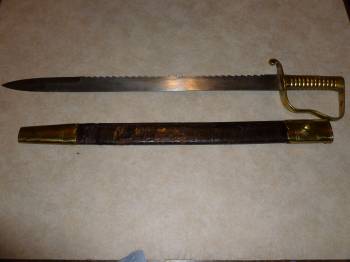


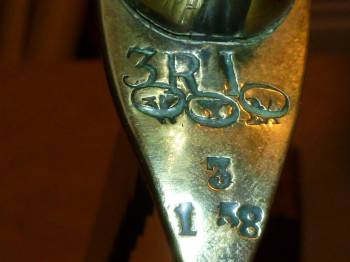
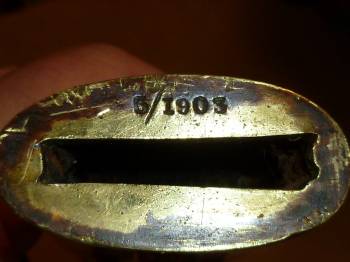 0
0 -
ROYAL CANADIAN MOUNTED POLICE - LONG SERVICE AND GOOD CONDUCT MEDALS
The Royal Canadian Mounted Police Long Service Medal - an idea conceived during the mid 1920's amid great hope and expectation. For the medal advocates a decade of frustrations and delay was to pass before their wishes for such an award were to be realized.
The matter of issuing medals to members of the R.C.M.P. in recognition of long service was put forward by Commissioner Cortlandt Starnes during the summer of 1925, when he queried the procedure to be followed when making application to the Governor General of Canada for the authority to issue such a medal.
On September 22, Starnes attempted to get things rolling when he submitted a memorandum to the Minister in Control of the R.C.M.P. in which he recommended an "Officers Decoration" as well as a "Long Service Medal". The decoration was to be awarded to officers who had completed twenty-five years of commissioned service, while the medal was to be awarded to officers, non-commissioned officers and constables after completion of twenty-five years service.
The wheels of progress quickly ground to a halt for this request was met with little interest by senior government officials. Over two years later, on September 30, 1927, a follow-up report was submitted by Starnes outlining the previous submission and emphasizing the fact that officers and other ranks in militia were awarded such a medal as were those in the Imperial Army and Navy. In this second submission, Starnes had reduced the number of qualifying years from twenty-five to twenty.
This latest action by Starnes got things moving again, for the time being at least, because on that same date the recommendations were forwarded to the Governor General for his approval, but results were slow in coming. Over a year later the Commissioner again felt compelled to jarr the memories of the officials involved by making yet another representation, requesting the report which had been forwarded to the Governor General for approval be returned to him. With this, results were quickly achieved. On December 6, 1928, the recommendations as submitted were approved by Order-in-Council P.C. 2l69.
The entire matter seemed to have reached an impasse once again. No action was taken beyond the Order-in-Council, and a disappointed Starnes retired on August 1, 1931, his wishes for the medal unfulfilled.
His successor, Major-General James H. MacBrien, continued with efforts to have the medal issued. On November 29, 1932, in a report to the Under Secretary of State in Ottawa, MacBrien emphasized that the medal had been authorized and requested the matter be taken up with the proper authorities in order that official sanction could be obtained from His Majesty, King George V.
A great many changes had taken place within the R.C.M.P. during this period of time resulting in new opinions being formulated by MacBrien reguarding the awards. These were made known to the Minister in control of the R.C.M.P. in a report dated January 5, 1933, which contained the following comments: "In the meantime the duties of the R.C.M.P. since April 1, 1932 have very materially changed and it is considered necessary to amend the regulations under which the award may be made. Further, the undersigned is of the opinion that there is no need to institute an "Officers Decoration" as the "Long Service Medal" will be sufficient for all ranks."
On January 14, the Committee of the Privy Council announced that the Order-in-Council for December 6, 1928 was canceled. The announcement continued by stating that in lieu of the previously authorized decoration and medal, a silver medal - designated the Royal Canadian Mounted Police Long Service Medal - would be instituted and awarded to officers, non-commissioned officers and constables of the R.C.M.P. after not less than twenty years service with the Force. This proclamation was followed on January 28 with a provision being made to have the names of the recipients published in the Canada Gazette.
The culmination of years of effort came on March 6, 1934 when King George V approved the institution of the medal, described as follows:
The medal was designated and styled "The Royal Canadian Mounted Police Long Service Medal". The medal consisted of a circular medal of silver, one and one half inches in diameter, with the Royal Effigy on the reverse, the crest and motto of the R.C.M.P., surrounded by the legend "For Long Service and Good Conduct". The riband of the medal was Royal Blue with two Yellow stripes, one-eighth of an inch wide and one-half inch apart.
Arrangements were made with personnel at the Royal Canadian Mint in Ottawa to engrave the dies and strike the medals and on February 13, 1935 the first lot of 245 medals was supplied at a cost to the Force of $2.00 each, including lettering. A medal was to cost a member $3.00 each for a replacement, in the event the original was lost or destroyed.
Regulations called for the medal to be worn to the left of all service medals, other than those awarded by a foreign power. The undress ribbon was three-eighths of an inch in depth and was worn on a detachable bar which was not visible.
The first awards of medals to members and ex-members were contained in the Canada Gazette for January 12, 1935. The list contained the names of 240 medal recipients and the majority of these were serving members. Examination of the roll of eighty-eight officers so named indicated fifty-seven were still serving, while ninety-three of the 152 non-commissioned officers and constables listed were sill with the Force.
The first presentation of medals took place at Ottawa, Ontario, on March 12, 1935 when the Governor General of Canada presented medals to seventy one members and ex-members who paraded in the drill hall at Cartier Square.
The R.C.M.P. had in its ranks many former Dominion Police and Provincial Police members following the amalgamation or the former on February 1, 1920 and six provincial forces during the period of 1928 to 1932. Service in these units counted as qualified service for the medal, as did service in the Customs-Excise Prevention Service of the Department of National Revenue, providing the combined service of the latter and the R.C.M.P. was continuous. Overseas service during W.W.I could not be counted, unless such service was with the R.N.W.M.P. "A" or "B" Squadrons. It is to be noted that service in the Mounted Police at any time since the inception of the Force counted as qualifying service and a member did not have to serve in the R.C.M.P. per se to obtain the medal. (The Force was known as the North West Mounted Police from 1873 to 1904 and the Royal North West Mounted Police from 1904 to 1920.)
The initial medals awarded and those produced up to December 1937 bore the effigy of King George V, despite the fact that he died in January of 1936. His successor, King Edward VII, reigned only until December 11 of that year at which time he abdicated the throne.
The fact that no medals with the effigy of King Edward VIII were produced is substantiated by a memorandum to the Curator of the R.C.M.P. Museum in Regina dated December 1, 1937, which accompanied the obverse die for the King George V medal being forwarded to that institution. In this covering report, it was noted "...this is now no linger in use, the die of the present sovereign having been recieved..." At this time, the "present sovereign" would have been King George VI.
There were two varieties of King George VI medals produced and for the purpose of this article, these will be designated Series I and Series II. The production of Series I medals ceased when, under the Royal Style and Titles Act (Canada) 1947, assent was given for the omission of the words "Indiae Imperator", or as on the R.C.M.P. medals, the abbreviation "Et Ind. Imp." This deletion was authorized by Order-in-Council, P.O. 4877, dated November 28, 1947, but was not to take effect until 1948.
The Series I medals bore the inscription "Georgivs VI Rex Et Ind. Imp." and on March 6, 1948, Commissioner S. T. Wood, in a letter to the Master of the Mint, requested the Mint engraver make a new die for the obverse of the medal, omitting the "Et Ind. Imp." The Series II medals bore the inscription "Georgivs VI Dei Gratia Rex",
Although Commissioner Wood's request called only for a new obverse die, it would appear a new reverse die was produced as well, as there are significant differences between the reverse of the Series I and Series II medals, although the reverse of the King George V and King George VI, Series I, appear identical.
Up to this time the medals had been struck from pure silver, without alloy, but officials at the mint suggested future medals be produced from .800 silver, as it would wear better, look just as good and be cheaper to produce. This request was acceded to by the Commissioner and so noted in correspondence to the Master of the Mint on June 25, 1948.
Expanded duties of the R.C.M.P. in 1950 paved the way for more changes as a result of the amalgamation with the R.C.M.P. of the British Columbia Provincial Police, the Newfoundland Rangers and portions of the Newfoundland Constabulary. The amended regulations as proposed on August 3, 1951 - and subsequently approved - provided for service in either the Newfoundland Rangers or the Newfoundland Constabulary be deemed as to have been service in a provincial police force.
On February 6, 1952, King George VI died and was succeeded by Queen Elizabeth II, thus requiring a change in the effigy on the medal and this effigy is still in use.
A suggestion put forward in 1946 recommended the awarding of clasps to the medal, one rosette after twenty-five years service and two rosettes after twenty-nine years service. These recommendations met the same fate as did many early recommendations reguarding the medal, in that no action was taken.
The issue was not dead however, for on February 2, 1954, Commissioner L. H. Nicholson put forward similar recommendations, altered to the extent that clasps would be worn to denote the completion of twenty-five, thirty and thirty five years of qualifying service, with clasps of bronze, sliver and gold respectively. When the ribbon was worn alone, the award would be denoted by a star of metal corresponding to that of the clasp.
These recommendations were accepted in their entirety by government officials, and authorized by Order-in-Council P.C. 1954-44/218, of February 18, 1954.
The provisions were not retroactive and applied only to those members who were on strength on or after that date. The stars were to be worn in the center of the undress ribbon, the clasps and stars could not be worn until the award had been announced. The clasp and star of the most recent award only was to be worn.
From the time the initial awards of medals were made, such had been approved semi-annualy, which in some cases created long delays in the presentation of the awards and complaints from the members concerned. As of July 1, 1956 any member was awarded the medal, or clasp and star, as the required service was completed and all other requirements met. In December of that year, a further change was instituted in that a certificate would be awarded to each medal recipient.
For many years the medal was supplied to the member in the small cardboard box in which it was shipped from the Mint, although the medal was presented officially at an occasion of some importance. As of August 1975, & Red and White lined Blue leatherette case with a metal crest of the Force on top was supplied with each medal. All members serving with the Force as of August 1, 1974 who qualified for the medal were entitled to receive the new style case, regardless if they left the Force in the interim.
At the end of 1975 the metal content had varied since the 1948 stipulation that .800 silver be used, for they were now being produced from an alloy of .925 silver and .075 copper.
The regulations in effect at that same time called for the length of the medal and the ribbon to be three and one-half inches from the top of the ribbon to the bottom of the medal.
Over the years, a large number of these medals have been awarded and totals to the end of 1975 have amounted to some 4,961; 504 to officers and 4,346 to non-commissioned officer and constables, 106 to special constables and 5 to marine constables.
The matter of miniatures of the medal for mess kit and evening wear with civilian dress was broached shortly after the introduction of the medal. These miniatures were not awarded or issued and were to be purchased by the members concerned if they so desired.
Initially, a number of firms submitted samples of the miniature medal end quoted prices varying lots, naturally being cheaper if large quantities were ordered. The main supplier appears to have been J.R. Gaunt & Son Limited in Montreal.
The responsibility rested with each member to procure the miniature medal if he so desired, but in 1953 Force officials decided that a bulk order would be placed and the medals then offered on repayment to those members who had expressed a desire to purchase one. During December, six King's effigy miniatures were ordered from Wm. Scully Ltd. in Montreal and 102 Queen's effigy were ordered from Gaunt. This was apparently the only time that a bulk order was placed by the force and since that time purchases have been made on an individual basis, although Force tailors often have a supply available for sale, but this is a service provided by them and the items were not ordered by Force officials.
With the introduction of clasps for the medal, miniatures were required. These were supplied by Gaunt and a bulk order was placed on February 25, 1957 for nine gold, eighteen silver and eighty bronze clasps. Since that time the clasps have been purchased on an individual basis, although the same situation exists as with the miniature medals in that supplies are often on hand at the tailor shop.
At the end of 1975, the regulations called for the length of the miniature medal to be two and one-eighth inches from the top of the ribbon to the bottom of the medal.
The years of work and frustration which led to the approval of this award have been long forgotten but this has not marred the fact that the Royal Canadian Mounted Police Long Service Medal continues to be highly prized by the members who have recieved it and many more will be awarded in the future to those successfully meeting the qualifications.
Written by By S/Sgt D. J. KLANCHER R.C.M.P., Submitted By M.W. Clare
 0
0 -
Hello Matthew.....
His Number, Rank, Name and Regiment or Unit should be on the Good Conduct...... My Father was R.A.F. and he had the same medals......
Mike
0 -
Canada's Largest and Finest Antique Collectors Gun and Militaria Show
The Alberta Arms and Cartridge Collectors Association
50th ANNIVERSARY SHOW
April 6th and 7th 2012 (Friday 0930 - 1700 and Saturday 0930 - 1600)
Stampede Park, BMO Center, Calgary, Alberta, Canada
Buy, Sell, Trade, Look, Displays, Laser Range
Antique and Modern Firearms, Militaria, Western Related Collectibles and Much Much More
0 -
Here are a few more pic's......
Mike

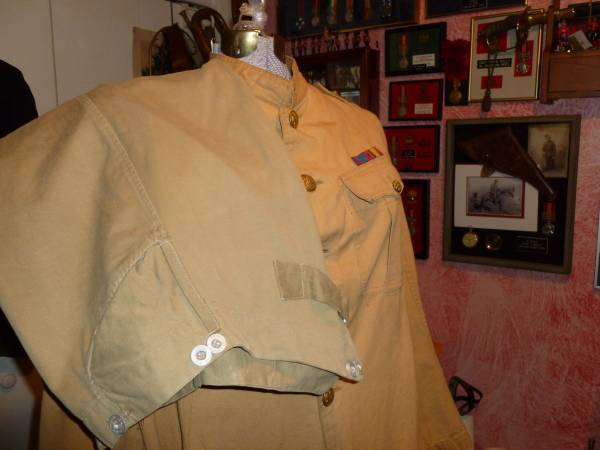 0
0 -
Good Morning Gentlemen.....
Here are a few pictures of a Boer War period Tunic and Pants that are in my collection.....
Note the difference in colour between the tunic and pants.....
The buttons are Kings Crown as this man served in the SAC for a number of years after the war had ended.....
Captain Perry Fall (1865-1960).....
In 1885 served in the escort of Louis Riel to trial and was one of the guards in the court room..... (Medal Only)
Served in Strathcona Horse 1900-1901 in South Africa...... (QSA Medal 4 Bars)
Served in South African Constabulary 1901-1908..... (KSA Medal 2 Bars)
The only markings are a Broad Arrow...... and the letter M in a circle......
Mike
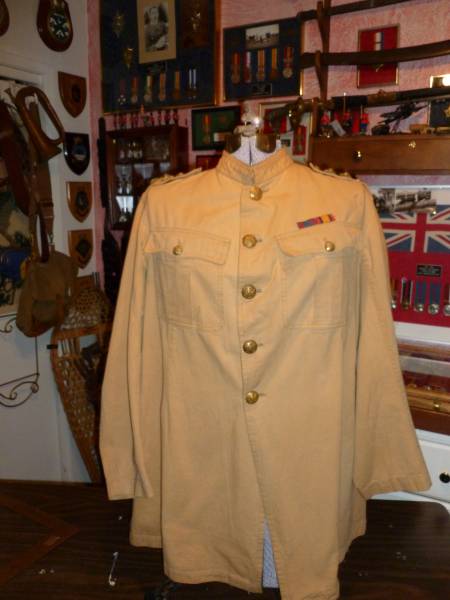
 0
0 -
Good Morning Christian......
First of all this sounds like an Officers or senior NCO's cane or swagger stick and not a whip, there should be a silver tip on the end..... The second thing is the Battle Honour, "South Africa 1900-1901" was not given out until after the Boer War was over (appox 1903 or 4) when the different regiments were authorized to use certain batte honours.... I think that this cane / swagger stick was used right up until the end of WW1 and possibly later.....
Mike
0 -
-
-
Ladies and Gentlemen......
At DNW in December......
Someone want a Christmas Present.....
Large collection of China (Boxer Rebellion) medals, English, German, Italian, Russian and Japan for sale.....
From a very good collection...... Including a couple of Defence of Legations......
Check it out......
Mike
0 -
Ladies and Gentlemen......
There is an interesting thread on a sister site, The British Medal Forum with regards to the possibility of copy medals coming out of China in the near future......
It is a good read, see below.....
http://www.britishmedalforum.com/viewtopic.php?f=2&t=73220&p=569413#p569413
Mike
0 -
Hello Mike......
The badge is Strathcona's Horse......
The lugs have been removed and pins soldered on......
Very Rare as I have only seen three before this one......
Made on board ship on way to South Africa.....
Please see photo....
Second photo Cap Badge....
Mike
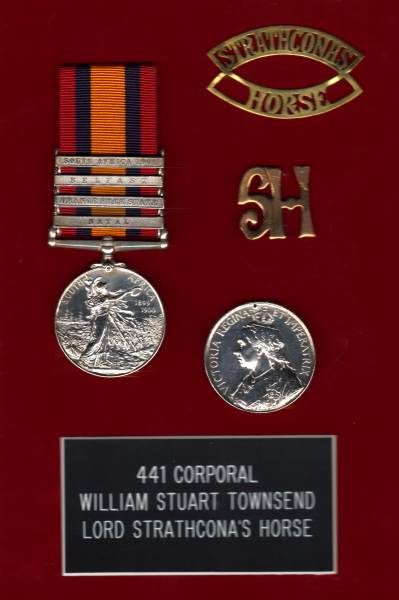
 0
0 -
Good Morning Mervyn......
I took that info from Wikipedea.....
My GF was Management during the strike and my Mother remembers that she and her sisters were not given the free childrens lunch at school because he was..... She was quite young and could not understand why she could not be with her friends......
Mike
0 -
Hi Noor......
Here is the National Emergeny that they are talking about......
Class War in May 1926: Nine days that shook the UK
The General Strike in 1926 was arguably the most momentous event of the 20th century in peacetime Britain.
The nine days of industrial action brought key industries to a standstill, affecting virtually every inhabitant of Britain. It caused panic among the ruling classes who mobilised soldiers to defend themselves.
Armoured cars were seen in Oxford Street with machine guns primed and ready. A number of army battalions were brought back from overseas to quell a possible armed conflict.
Take a look here:
http://en.wikipedia...._general_strike
Mike
0 -
Mervyn......
Price realized...... R36 500
Mike
0 -
Good Morning Gentlemen......
I have been trying for a long time to find out who this is.....
Mike
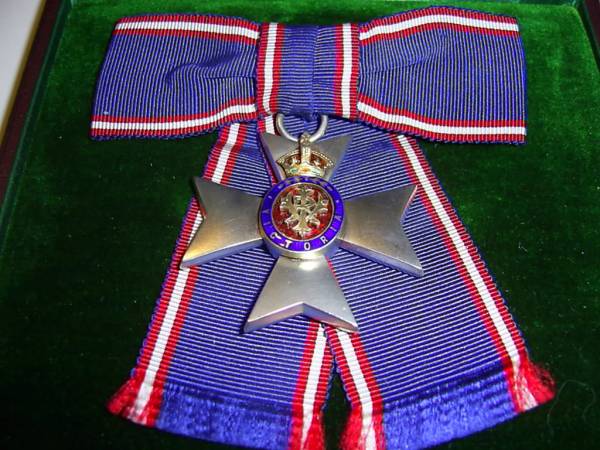

 0
0 -
Hi Jeff.....
I don't like the naming on this medal but without holding it in your hands it is hard to tell.....
I have seen one in the past and if I remember correctly the naming was impressed......
Mike
0




Boer War Unit Info Please! Ross's Machine Gun Battery
in Great Britain: Research, Documentation & History
Posted
Good Morning.....
Have looked in some of my books but as unable to find anything, will keep looking.....
Mike